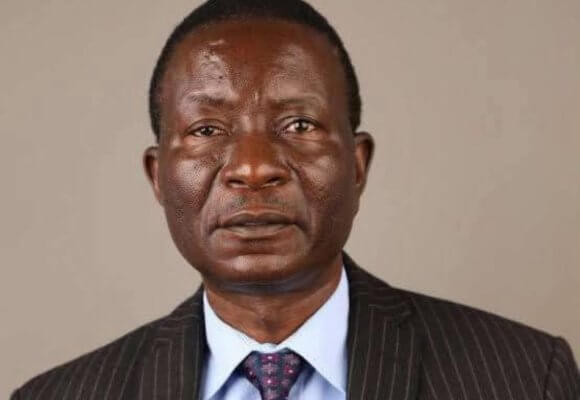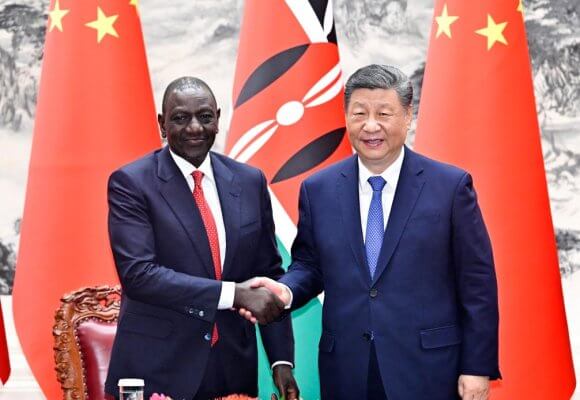|
LISTEN TO THIS THE AFRICANA VOICE ARTICLE NOW
Getting your Trinity Audio player ready...
|
Ksh 1.2 Billion Settlement for Kenyan Man Killed by Police in the US
The family of Irvo Otieno, a 28-year-old Kenyan man who died after being handcuffed and pinned to the floor by sheriff’s deputies and medical staff members at a Virginia state mental health facility, has reached an $8.5 (Ksh 1.2 billion) million settlement.
The out-of-court wrongful death settlement was approved by a judge on Tuesday. Otieno’s death was ruled a homicide by asphyxiation earlier this year.
Surveillance video released by a prosecutor showed Otieno being pinned to the floor by multiple security officers in the moments leading up to his death. The video showed Otieno, bound by his hands and feet, being forcibly taken into a room and dragged into an upright seated position on the floor with his back against a chair.
Ten minutes later, after Otieno had turned onto his side with three people holding him, his body jerked, and five more deputies and workers moved to pin him to the floor.
After 12 minutes of Otieno being pinned to the ground, one deputy could be seen shaking Otieno’s hair and attempting to take a neck pulse, but Otieno was unresponsive. Three more minutes passed before CPR began, with Otieno’s limbs still shackled.
“My son was treated like a dog, worse than a dog,” Otieno’s mother, Caroline Ouko, said at a news conference. “I saw it with my own eyes on the video.”
In a joint statement, Otieno’s lawyers, Mark Krudys and Ben Crump, said that “the family is pleased that they were able to find a resolution outside of court in a manner that honours Irvo’s life.”
Otieno’s death sparked outrage and protests, with many calling for justice and accountability for those responsible.
Somalia Seeks Delay in African Union Peacekeeping Forces Withdrawal
Somalia is seeking a delay in the withdrawal of African Union peacekeeping forces in the country, citing significant setbacks in the fight against al-Shabab militants.
The country has asked the United Nations to delay by three months the next phase of departure of the African Union Transition Mission in Somalia (ATMIS) troops. A total of 3,000 troops of the 17,000-strong force were due to leave by the end of the month in the second phase of the withdrawal.
However, the Somali government says that it is facing “significant setbacks” in its fight against al-Shabab. The group has continued to carry out deadly attacks, even as the ATMIS mission has been gradually drawing down its troops.
The Somali government is also concerned that al-Shabab could take advantage of any further reduction in the ATMIS presence to expand its territory and influence.
The Somali government is urging the UN Security Council to approve its request for a delay in the withdrawal of ATMIS troops. The government says that it needs more time to train and equip its own security forces to take on the fight against al-Shabab.
The UN Security Council is expected to consider Somalia’s request in the coming weeks.
Elon Musk’s Intention to Have X Users Pay to Use the Platform
On September 20, 2023, Elon Musk, the CEO of X (formerly Twitter), announced in an interview with Israeli Prime Minister Benjamin Netanyahu that he is considering charging all users a monthly subscription fee to use the platform. Musk said that this is the only way he can think of to combat the vast armies of bots that are used to spread misinformation and spam on X.
“We’re moving to having a small monthly payment for use of the system,” Musk said.
Musk’s intention to charge users for X has been met with mixed reactions. Some users have expressed support for the idea, saying that they are willing to pay to support a platform that is committed to free speech and combating bots. Others have criticized the idea, saying that it will make X less accessible to users who cannot afford to pay a subscription fee.
There are a number of potential benefits to charging users a subscription fee to use X. First, it could help to reduce the number of bots on the platform. Bots are often used to spread misinformation and spam, and they can also be used to manipulate public opinion. By charging users a fee, Musk could make it more difficult for bot operators to create and maintain large bot networks.
Second, a subscription fee could help to generate revenue for X. This would allow Musk to invest in new features and improvements for the platform, without having to rely on advertising revenue.
Third, a subscription fee could give users more control over their experience on X. For example, Musk has said that he is considering offering paid subscribers the ability to filter out ads and to choose which algorithms are used to curate their feeds.
However, there are also a number of potential drawbacks to charging users a subscription fee to use X. First, it could make the platform less accessible to users who cannot afford to pay a fee. This could lead to a decline in the number of users on X, which could make it less attractive to advertisers and developers.
Second, a subscription fee could create a two-tier system on X, with paid subscribers having more privileges than free users. This could lead to resentment among free users and could make the platform less welcoming to new users.
Third, a subscription fee could make it more difficult for Musk to achieve his goal of making X a platform for free speech. If users have to pay to use the platform, they may be less likely to express unpopular opinions or to challenge the status quo.
Musk has not yet released any details about what the subscription fee would be or what benefits it would offer users. However, he has said that he wants to keep the fee low so that it is affordable for everyone.





























LEAVE A COMMENT
You must be logged in to post a comment.